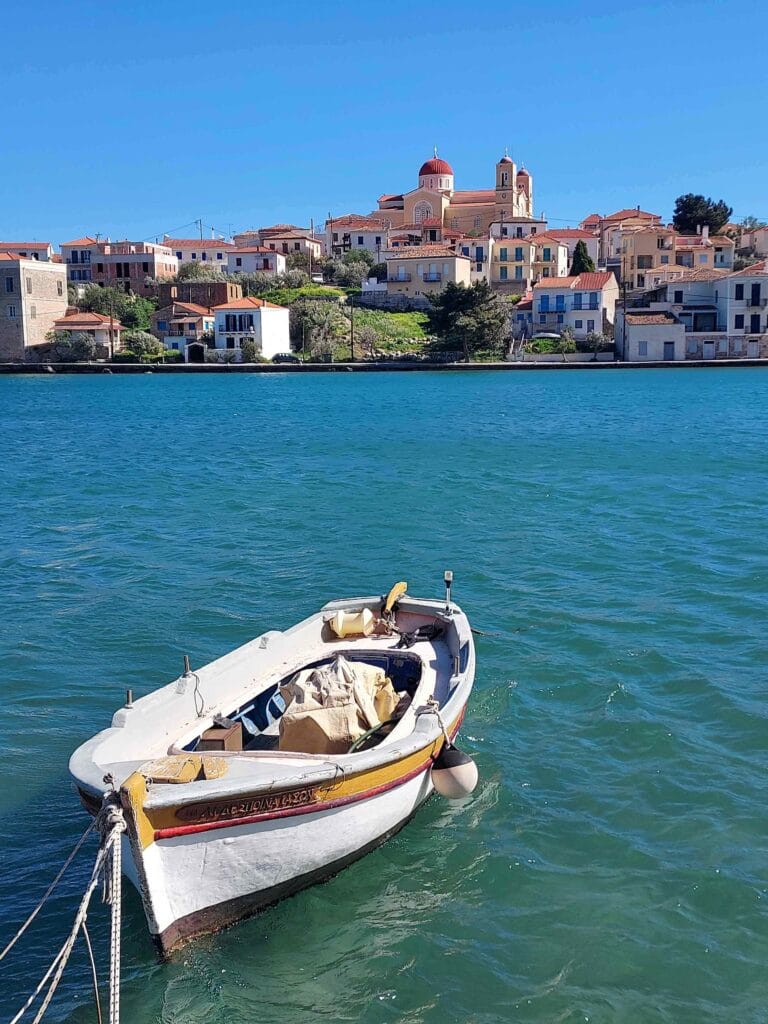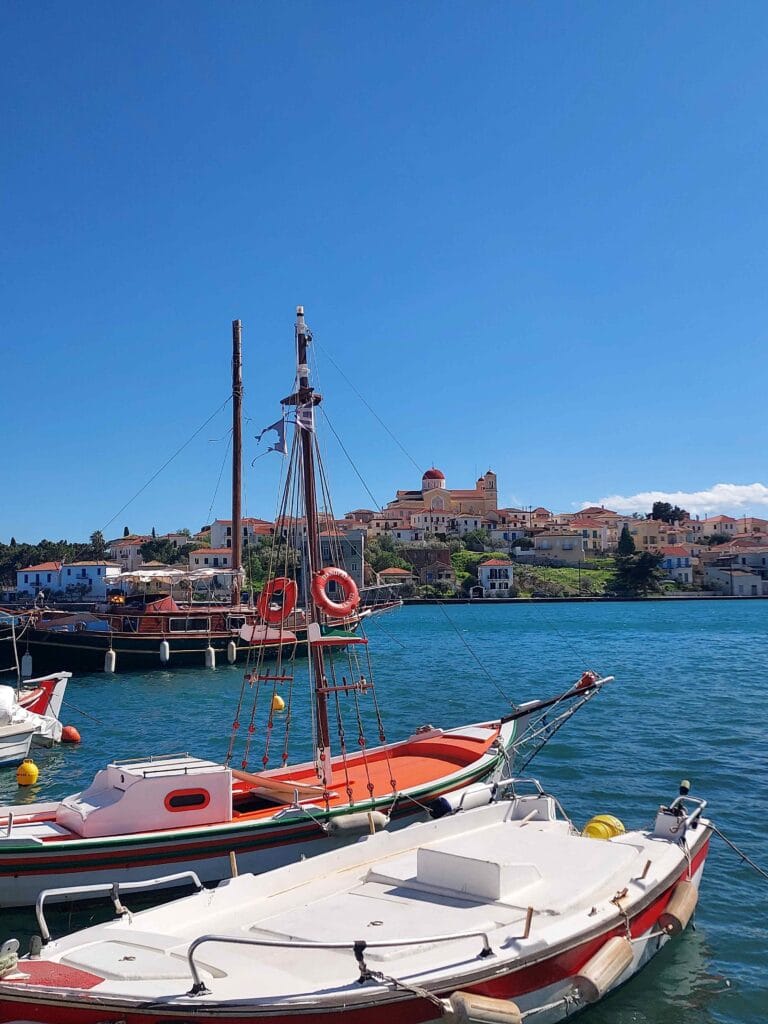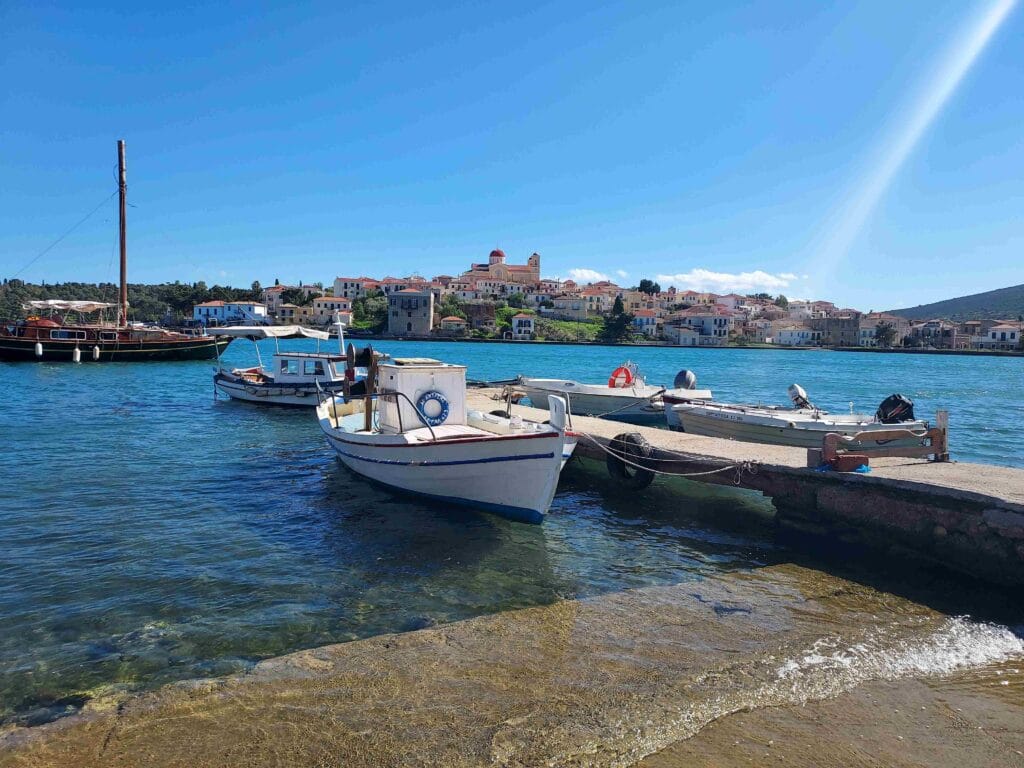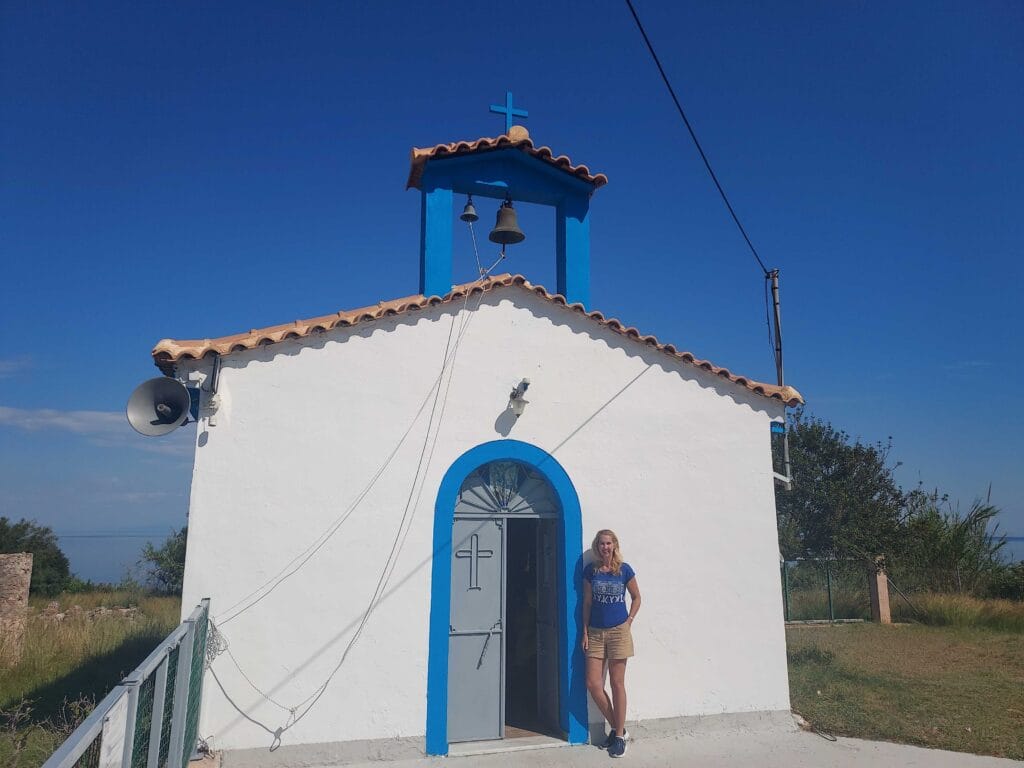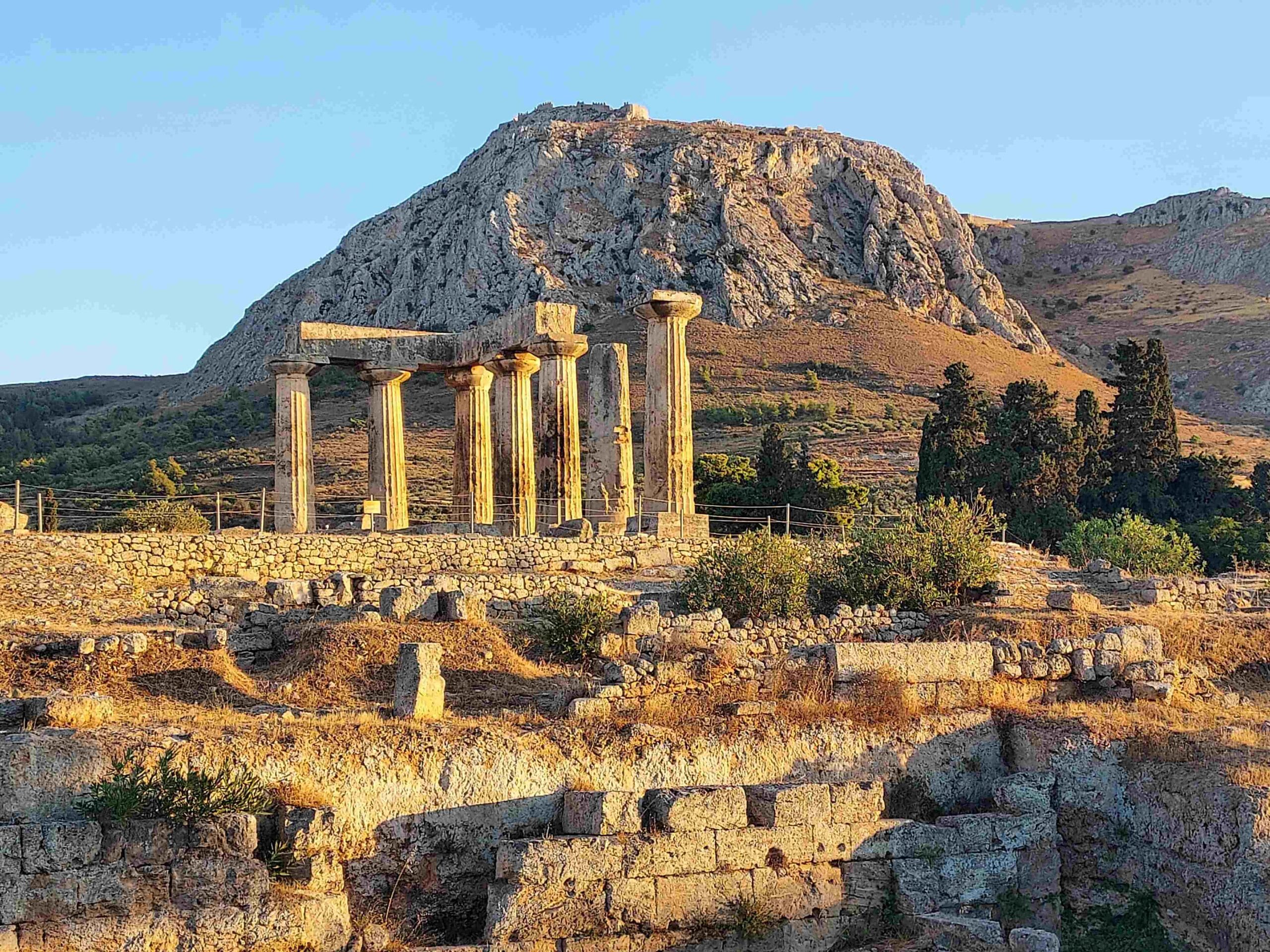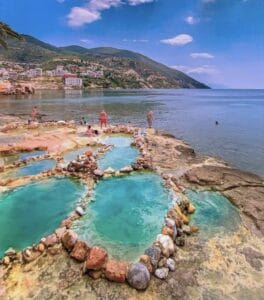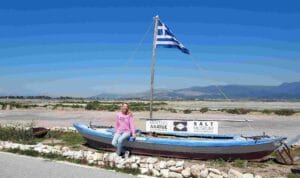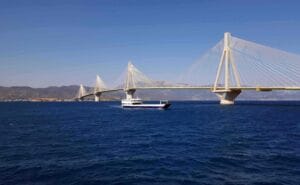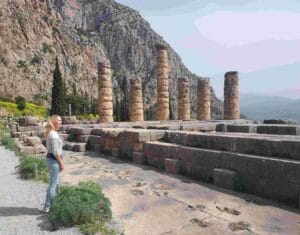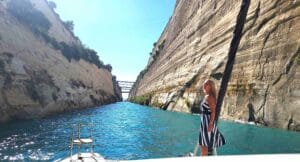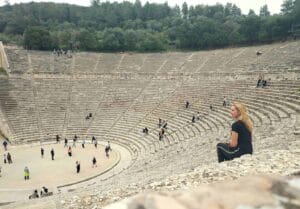And once you have sailed through the Corinth Canal from east to west, you suddenly leave the Aegean Sea, where we sailed around for so long (with islands such as Poros, Hydra, Aegina, Crete, and also Athens — all located in the Aegean Sea), and you enter the Gulf of Corinth!
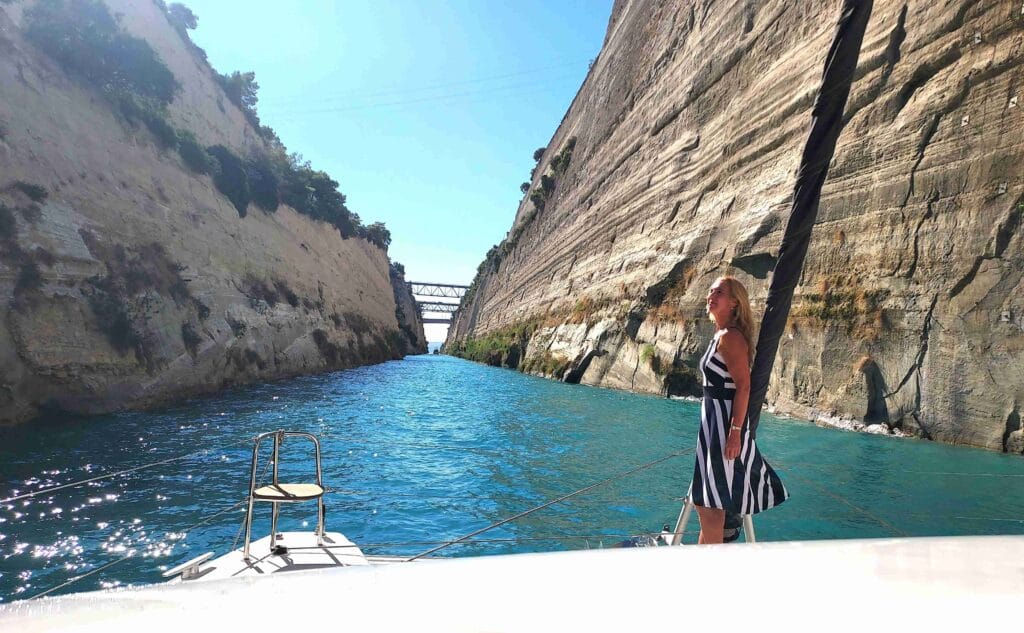
The Gulf of Corinth is about 130 km long and varies in width from 8 to 30 km. It is known for its depth: in some places more than 900 meters.
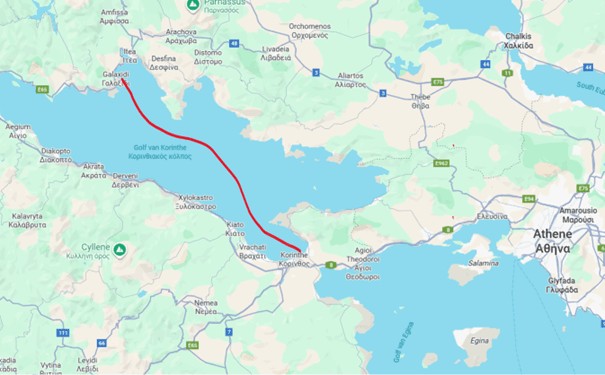
Ancient Corinth
Of course, after passing through the Canal, we first wanted to visit the well-known city of Corinth. Today it is a modern city, but just 7 km away by bike lies the famous ancient city. We moored our boat in the surprisingly small port of Corinth and hopped on our bikes.
The city is located in a strategic place between the Aegean and the Ionian Sea — exactly where Greece is at its narrowest.
The Corinthians constructed the first “diolkos,” a kind of paved slipway over which ships were dragged across land to cross the isthmus. This was the precursor to the Corinth Canal!
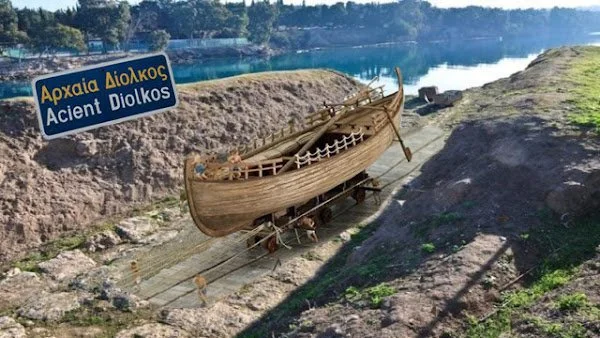
Corinth grew into a true city-state (polis) in the 8th century BC. Its location between two seas made Corinth the “Venice of Antiquity,” with enormous prosperity through tolls on trade routes.
The city became famous for its art, pottery (Corinthian ceramics), and architecture — the Corinthian order originated here, recognizable by its decorative foliage.
Corinth was also an important religious center, especially for the goddess Aphrodite. On the Acrocorinth mountain stood her famous temple, where—according to tradition—more than 1,000 priestesses (sacred courtesans) served.
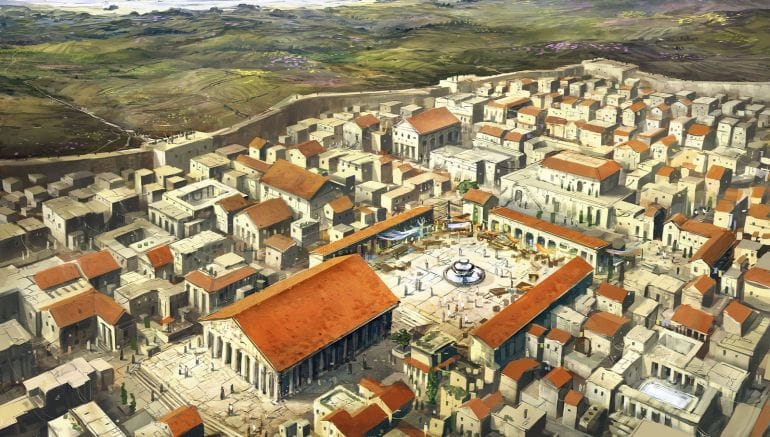
In 146 BC, Corinth was destroyed by the Romans under General Mummius.
In 44 BC, Julius Caesar rebuilt the city as “Colonia Laus Julia Corinthiensis,” and it once again became a flourishing trading hub.
In antiquity, Corinth was known for its “free morals” and wealth — there was even a verb korinthiazesthai, which literally meant “to behave Corinthian,” or: to indulge in luxury or love.
The Apostle Paul stayed here around 50 AD and later wrote the letters to the Corinthians, included in the New Testament. Because of this, Corinth is also an important pilgrimage site for Christians.
The ancient city has been preserved as ruins and can be visited.
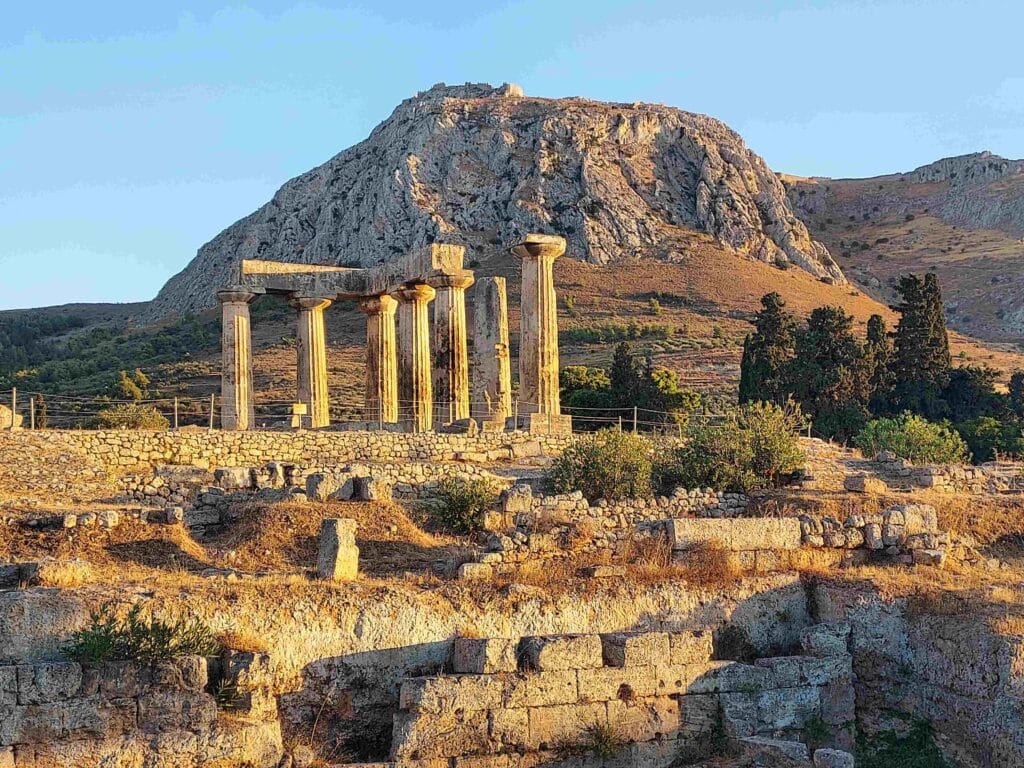
We arrived there at sunset, so the site was closed, but we were still able to make this video:
Galaxidi
We continued sailing eastward into the Gulf of Corinth, and along the north coast were several charming towns worth visiting. We set course for Galaxidi because we read that it was a picturesque fishing village.
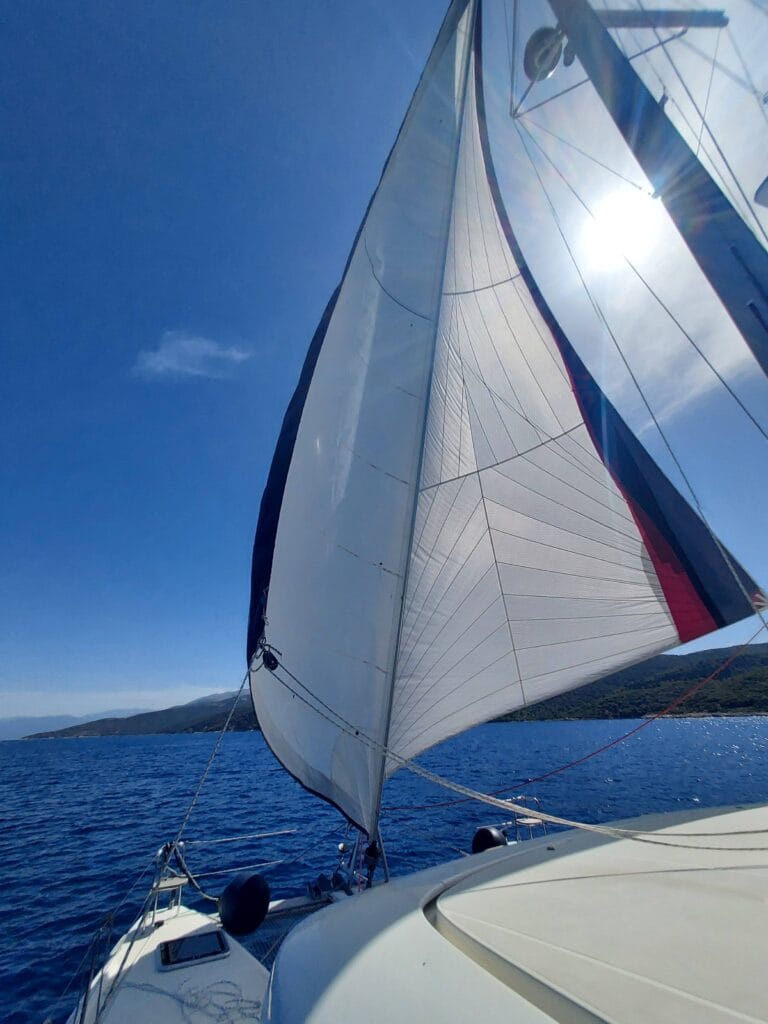
We found a small harbor, where only one spot remained — behind a large fishing boat at the quay. The fishermen helped us with mooring and then returned to arranging their nets.
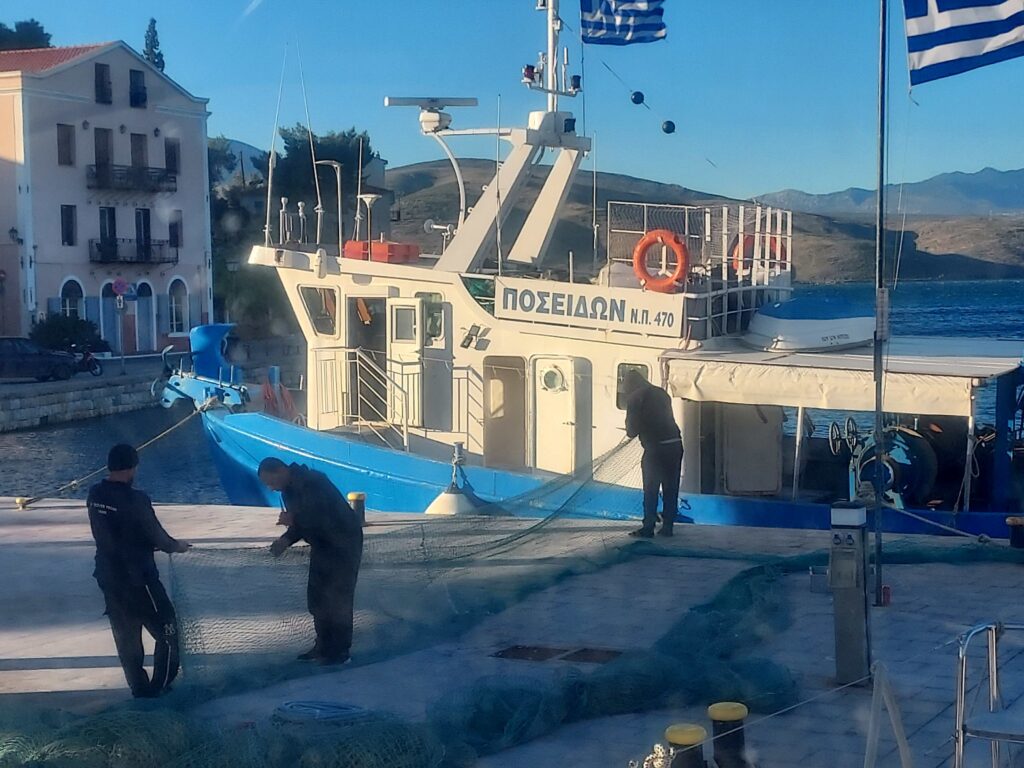
We wandered through the town and saw many references to seafaring. It turned out that in the 18th and 19th centuries, there were many shipyards and shipping companies. Sources say that Galaxidi had more than 300 registered ships in 1860, and in the years that followed it became one of the most important Greek seaports, with around 130 ship-owning families.
This wealth led to a great deal of neoclassical architecture: captain’s houses, elegant mansions along the waterfront, and maritime symbolism within the buildings.
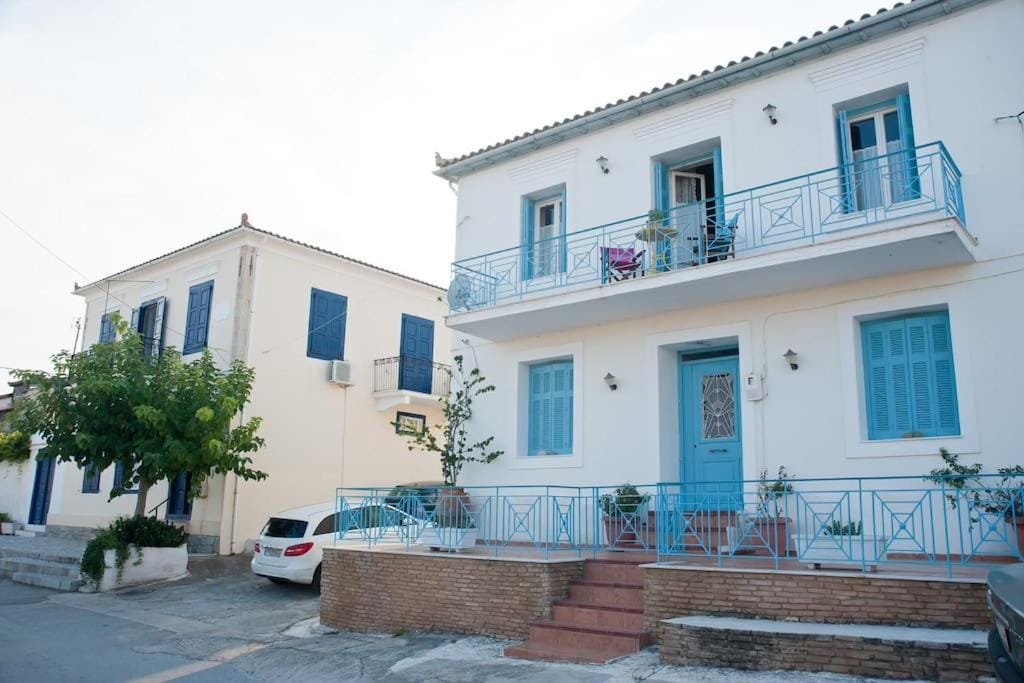
When we walked over the hill behind the small harbor, we reached a much larger body of water, and only then could we truly appreciate the beauty of Galaxidi. We thought it was very beautiful and atmospheric!
